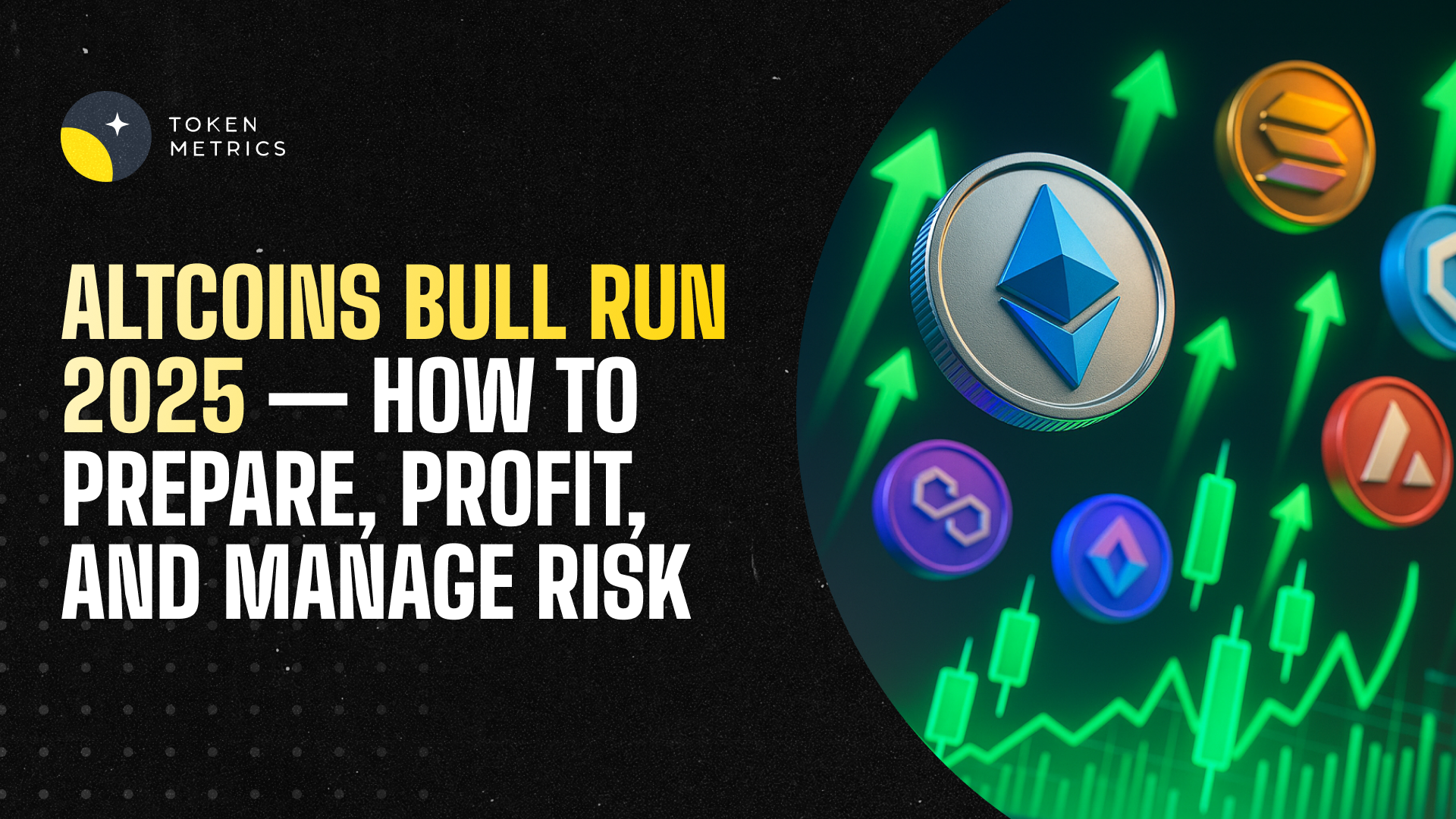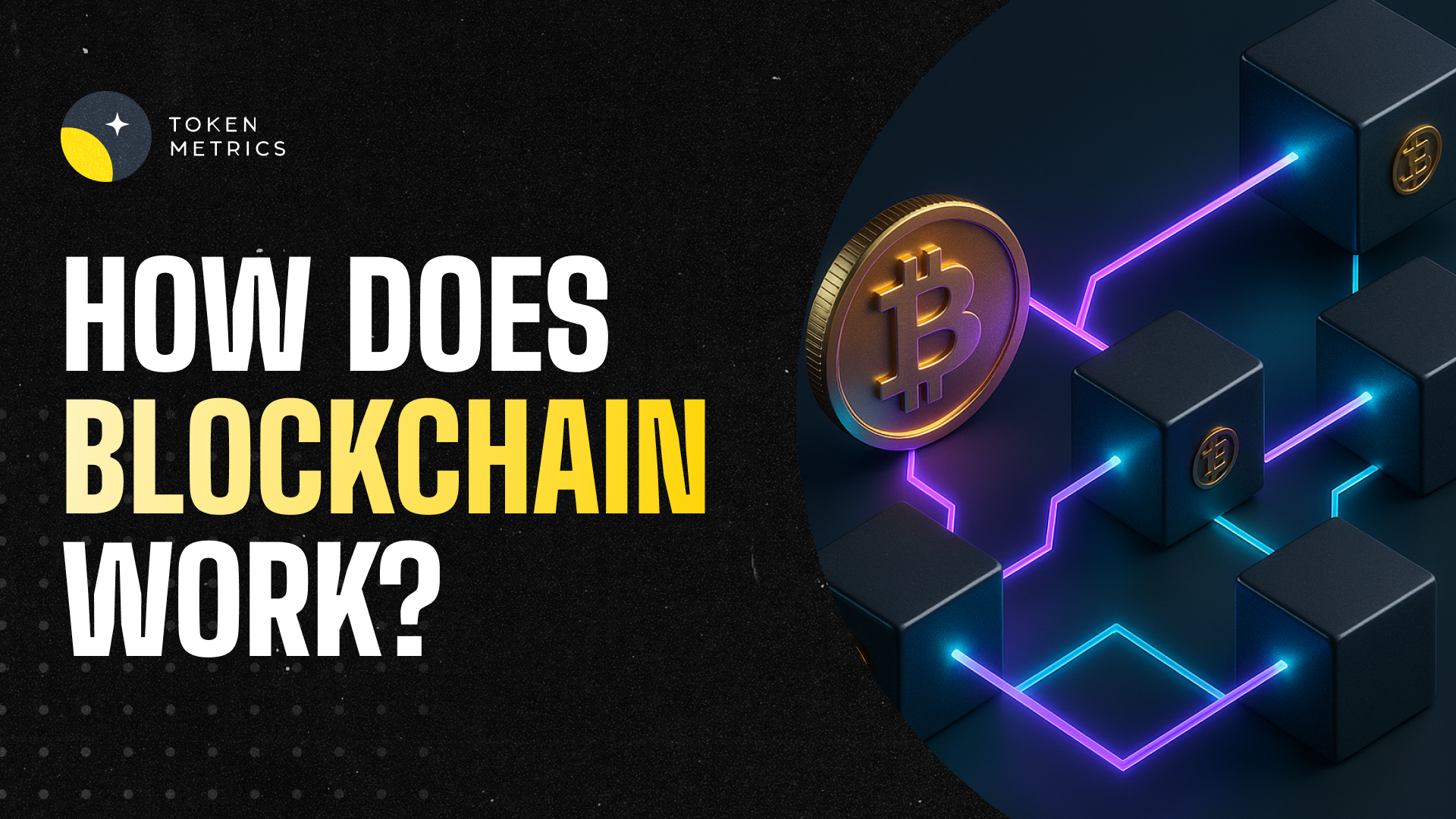
Best Crypto API for Automated Trading: How Zapier and Token Metrics Help Crypto Traders Win

Zapier is a no-code automation platform that lets you connect different apps and workflows using simple logic. With this integration, Token Metrics becomes one of the most powerful crypto APIs available for automation.
Now, you can instantly stream insights from the best crypto API into your favorite tools—whether you're managing a community in Discord, running a trading desk in Slack, or tracking token performance in Google Sheets.
Imagine automatically alerting your team when:
- A token’s Investor Grade turns bullish
- The Sharpe Ratio crosses a risk threshold
- A new coin ranks in the top 10 AI indices
- A project’s Valuation Score improves week-over-week
That’s just the beginning.
Building a Real-Time Crypto Market AI Bot on Discord
Let’s break down one of the most exciting use cases: creating a crypto AI assistant in Discord that delivers real-time token insights using Token Metrics and Zapier.
Step 1: Set Up Token Metrics API in Zapier
First, connect your Token Metrics account to Zapier and select your trigger. Zapier will display available endpoints from the Token Metrics API, including:
- Indices Performance
- Investor and Trader Grades
- Quant Metrics
- Valuation Scores
- Support/Resistance Levels
- Volatility and Risk Metrics
For this walkthrough, we’ll use the Quant Metrics endpoint and monitor the token Hyperliquid, a rising star in the market.
Step 2: Pass Token Data to OpenAI (ChatGPT)
Next, we use OpenAI’s ChatGPT node within Zapier to interpret the raw token data.
The Token Metrics API provides rich data fields like:
- Sharpe Ratio
- Value at Risk
- Price Momentum
- Drawdown
- Volatility Score
- Valuation Ranking
In the prompt, we pass these values into ChatGPT and instruct it to generate a human-readable summary. For example:
“Summarize this token's current risk profile and valuation using Sharpe Ratio, Value at Risk, and Price Trend. Mention whether it looks bullish or bearish overall.”
The AI response returns a concise and insightful report.
Step 3: Send the AI Summary to Discord
Now it’s time to publish your insights directly to Discord. Using Zapier’s Discord integration, you simply map the output from ChatGPT into a message block and post it in a channel of your choice.
The result? A clean, formatted message with up-to-date crypto analytics—delivered automatically in real time.
Use Case Expansions: More Than Just One Token
This workflow doesn’t stop at one token.
You can easily expand your automation to:
- Monitor multiple tokens using separate Zaps or a lookup table
- Set alerts for changes in Investor Grades or Valuation Scores
- Summarize weekly performance of indices
- Compare Trader vs Investor sentiment
- Deliver price support/resistance alerts to Telegram, Slack, or email
Every piece of this system is powered by the Token Metrics crypto API, making it one of the most versatile tools for crypto automation on the market.
Why Token Metrics API is the Best Crypto API for Automation
When it comes to building crypto tools, bots, or dashboards, data quality is everything. Here’s what makes Token Metrics the best crypto API to plug into Zapier:
✅ Institutional-Grade Data
We use AI, machine learning, and quantitative analysis to score, rank, and predict token behavior across thousands of coins.
✅ Full Market Coverage
Track tokens across top L1 and L2 chains like Ethereum, Solana, Avalanche, Base, and more.
✅ Actionable Signals
Our API includes pre-calculated metrics like Bullish/Bearish Signals, Investor/Trader Grades, Risk Scores, and On-Chain Sentiment.
✅ Scalable & Modular
Pull exactly the data you need—from a single token’s valuation score to an entire index’s historical performance.
What You Can Build Using the Zapier and Token Metrics API
With this integration, developers, traders, and crypto communities can now build:
- AI Discord bots that auto-analyze any token
- Crypto trading dashboards in Notion or Google Sheets
- Investor alerts via SMS, Slack, or Telegram
- Weekly market reports sent to your email inbox
- Risk monitors for portfolio managers
- Auto-updating content for crypto blogs or newsletters
Zapier’s drag-and-drop interface makes it easy—even if you don’t write code.
Example Project: Community-Run Trading Assistant
Let’s say you’re running a Discord community around DeFi or AI tokens. With this integration, you can:
- Use the Token Metrics API to fetch daily Quant Metrics for trending tokens
- Pass them into OpenAI for summarization
- Auto-publish to a #daily-market channel with the latest signal summary
You now have a fully autonomous crypto analyst working 24/7—helping members stay informed and ahead of market shifts.
Start Building Today
If you’ve been looking for a crypto API that’s both powerful and flexible—Token Metrics is it. And with our new Zapier integration, you can bring those insights directly into the tools you already use.
➤ Ready to build your first crypto AI bot?
- Sign up at https://www.tokenmetrics.com/api
- Get your API key
- Connect to Zapier
- Automate your crypto intelligence in minute
Click here to view the demo!
This is the future of crypto trading: AI-powered, automated, and deeply personalized.
Final Thoughts
Crypto markets don’t sleep—and neither should your insights.
With the best crypto API now available through Zapier, Token Metrics gives you the power to build anything: bots, dashboards, trading agents, alert systems, and more.
Whether you're an individual trader, a Web3 builder, or a fund manager, this integration brings automation, AI, and crypto intelligence to your fingertips.
Let’s build the future of trading—together.

.svg)

Create Your Free Token Metrics Account

.png)




%201.svg)
%201.svg)


%201.svg)












.svg)




.png)